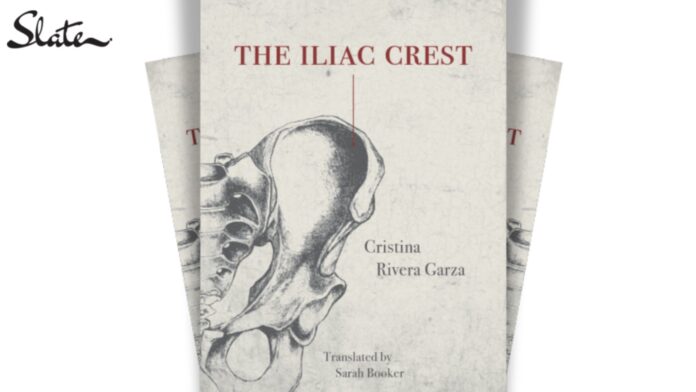By Eleanor A. Sangma
The Greek hero Odysseus’ journey back home to Ithaca after the Trojan War remains the epitome of the epic narrative tradition centred around the struggles of men. And it all starts from the crest of Ilion or Ilium – the archaic name of the city of Troy.
Mexican author Cristina Rivera Garza, in her own The Iliac Crest, explores the journey of one man and his struggle to retain his identity.
The story unveils on a dark and stormy night at the unnamed narrator’s house, as a stranger shows up looking for refuge. Besides introducing herself as Amparo Dávila, the stranger does not offer much. The narrator’s former lover, whom he refers to as the Betrayed also arrives that night, in extremely bad shape. Dávila takes care of the Betrayed, as a sister or a lover would. They form a strong bond over the course of time, even conversing in their own secret language, effectively alienating the narrator, in his own home.
He learns that Dávila used to be a writer and that she is presently writing about her ‘disappearance’ – for which she asks for his help.
She also lets the narrator know that she is aware of his real identity by declaring, “I know you are a woman.” This becomes the unravelling of the narrator, as he starts off on a journey to discover who Amparo Dávila actually is and how he can get rid of her.
The story is set in a world, mirroring our own reality, where human experiences have historically been ruled by absolute binaries such as male and female, north and south, past and present; all things are black or white… until they’re not. Reality is never as clean cut as society would have us believe. These polarities are usually dictated by the language that we use.
Language is often gendered and divisive in nature. In his essay, Definition of Man, theorist Kenneth Burke contends that language is a symbolic system that helps in organising our reality while restricting our ability to perceive it. As we put things and people into neatly labelled boxes of their own, we also dilute the significance of our world and the experiences it offers.
At the beginning of the book, the narrator is determined to establish the fact that he is a man, by distinguishing himself from the female sex. He makes statements such as, “I guess this is something that men will understand,” “We hope that the ladies believe it,” and “I am a man who is sometimes misunderstood”.
As the story progresses, the narrator’s assurance of his identity starts to become shaky as he questions all that he has ever known. He feels frightened as the different facets of his self, especially the feminine he had hidden inside him, start to emerge. The author is quick to draw the line between men and women, but quicker still to blur that line.
The narrator feels isolated and disoriented as he struggles to hold on to his own self; at one point saying, “I felt as if I were in a parenthesis in a sentence in an unknown language.”
He shows that he no longer believes his own thoughts and recollections when he starts to obsessively inspect his genitalia to confirm that he is truly a man. The author contends that this concern is founded on a more significant issue than just an identity crisis, i.e., the silencing of the female voice.
She implies that the categorisation of people based on gender has repercussions, especially for women. Gendered language is inextricably linked to gendered violence.
Garza has first-hand knowledge of the instability at the border between Mexico and the United States, as she has lived close to the area for the majority of her life. Hundreds of women have died or disappeared along the border; their identities vanishing into thin air.
The protagonist, Dávila, serves as a more obvious allusion to the submissive role of women in the literary world. Dávila was a real-life Mexican author whose tales of women characters caught up in the chaos of reality first appeared in print in the 1950s. She and other women authors have generally been overshadowed by their male peers.
Garza maintains that language determines identity, and works to either expose or disguise the self. As Dávila tells the narrator, “We need certain words to fathom what we are.” These words are shaped by centuries of patriarchal dominance, which tend to undermine the female experience.
The book, through its construction and deconstruction of words, attempts to dismantle the rigid notions of identity and boundaries – physical and psychological. It reflects our current scenario where gender is not confined to a binary and some individuals do not fall into the stereotypical male or female categories.
Some of them could exhibit traits common to both men and women, some might not fully identify with any gender, and still others’ gender might change over time. The world we live in now is bolder in terms of how individuals identify and express themselves.
There is no definitive interpretation of the book, and no precise answers to the many questions a reader might have after having read this. One might start questioning whether the narrator is a man, a woman, or… a tree. Whatever one identifies as, the author appears to be saying that, in the end, we should all be allowed to just be.


